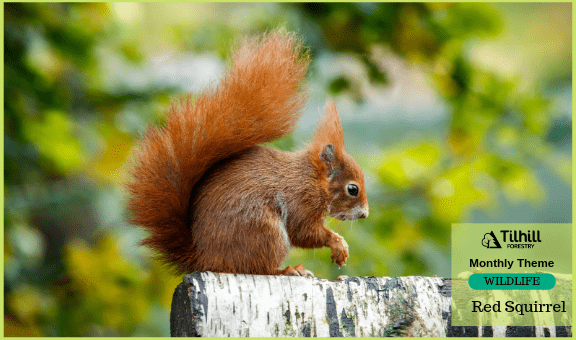This website uses cookies so that we can provide you with the best user experience possible. Cookie information is stored in your browser and performs functions such as recognising you when you return to our website and helping our team to understand which sections of the website you find most interesting and useful.
The Red Squirrel is a protected species. Both the animals and their dreys are protected by law. It is illegal to carry out any forestry work close to a Red Squirrel drey, without taking steps to positively avoid damage.
Look out for:
Dreys are usually built in the fork of the main trunk or main branches of conifers – Norway spruce in particular and Scots pine being favoured species. Sitka spruce and larch trees are less likely to have dreys in them.
De-seeded cones on the ground. Not conclusive proof, as greys also eat cones, but a good indication of squirrel activity/presence.
Why?
Avoid prosecution: It is a criminal offence to ‘intentionally’ or ‘recklessly’:
• Kill, injure or take (capture) a red squirrel;
• Damage, destroy or obstruct access to any structure or place which a red squirrel uses for shelter or protection;
• Disturb a red squirrel while it is occupying a structure or place which it uses for that purpose.
DO
✔️ Immediately STOP work and inform your line manager if you see a red squirrel or a drey on your site.
DON’T
❌ Fell trees that have dreys in them.
❌ Proceed with any operations until advice has been sought.




